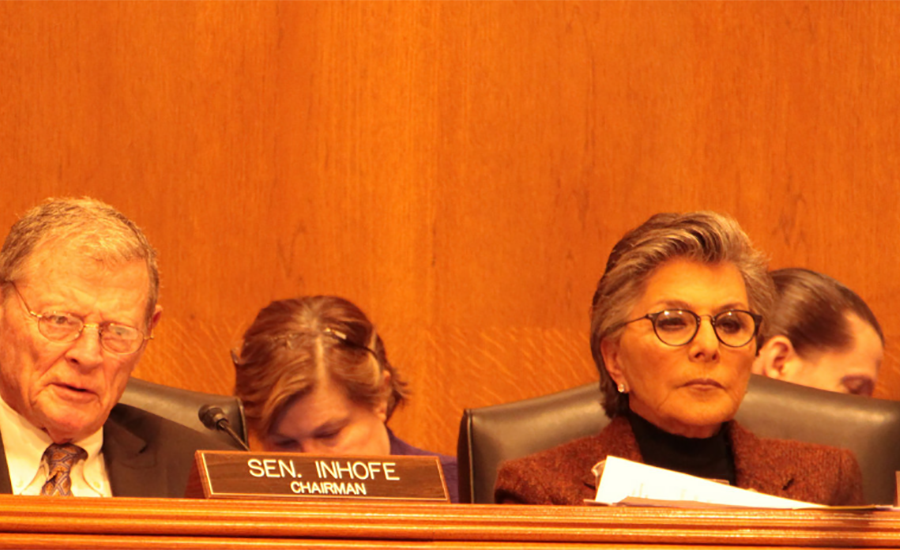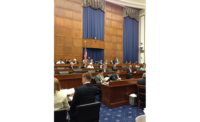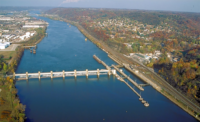A Senate committee has moved quickly to approve a new, $11-billion water resources bill that would authorize 27 new Army Corps of Engineers projects and also provide funds to deal with drinking-water system emergencies including the one that has hit Flint, Mich.
The new Water Resources Development Act, or WRDA—which the Senate Environment and Public Works Committee approved on April 28 on a 19-1 vote —authorizes $5 billion in federal funds for Corps navigation, flood control, port dredging, environmental restoration and other projects.
That includes $1.65 billion that the committee added in its voting session for two Corps flood-control projects in California: one in West Sacramento and the other in the American River watershed.
The panel's action came in a brief meeting that took place only two days after the measure was introduced by its chairman, James Inhofe (R-Okla.) and top Democrat, Barbara Boxer (Calif.). A Republican committee aide said after the vote that the panel is hoping for floor action on the measure in May or June.
Boxer noted that the legislation isn't all that Democrats or Republicans would have wanted. But she added, "This bill is the sweet spot where we can get it done."
(Bill summary and section-by-section outline. Excludes package of amendments that the committee approved on April 28,)
Unlike the last water resources measure, enacted in 2014, and others that went before it, the committee's bill includes a substantial title dealing with drinking water and clean water infrastructure.
Mike Strachn, a senior advisor with Dawson & Associates, Washington, D.C., says, “It is a water resources development act in the broadest possible sense.” He adds, “It embraces water issues beyond the normal, traditional Corps of Engineers WRDA-type issues.”
Still, says Strachn, a former Corps manager and top House transportation committee aide, the “cornerstone” of the new Senate bill, as with past WRDAs, is its authorizations of new projects that have received Army Chief of Engineers’ reports on their benefits and costs. The legislation also authorizes studies for potential projects and $463 million for modifications to earlier projects.
By far the largest item on the list is a $1.95-billion environmental restoration project in Florida’s Everglades, for which the bill would authorize a $976.4-million federal share.
The second-largest authorization is a $466.8-million federal share for hurricane and storm protection on the north shore of Louisiana’s Lake Pontchartrain. The project’s total cost is an estimated $718.1 million.
The new-project list may well grow. Strachn adds, “I have pretty good reason to believe that there are at least a handful of additional ‘chief’s reports’ that are scurrying towards completion and may end up being in the Senate bill.” He says his firm has an interest in one such project.
Projects are one focus in the bill for the American Association of Port Authorities. Jim Walker, AAPA director of navigation policy and legislation, says, “We’re interested in those authorizations [for] helping advance towards 21st-century infrastructure.”
Among the measure’s 27 projects are about a half-dozen that involve dredging to deepen harbors. The largest in that category is a $493.3-million deepening of Charleston Harbor in South Carolina, for which the Inhofe-Boxer proposal would authorize $224.3 million in federal funds.
The bill also has other policy provisions that ports had sought, Walker says. They include a new alternate yardstick for determining the annual target for spending Harbor Maintenance Tax revenue; and extending the authorization for funds that would go to “donor and energy-transfer ports.” Donors include West Coast ports that pay more in harbor maintenance taxes than they get back in federal funding.
Another plus for ports is language that would provide 75% federal funding for deepening harbors down to 50 ft. At present, the 75% federal share applies to dredging to 45-ft depths; from 45 to 50 ft, the federal contribution now is 50%.
The measure also would deauthorize 11 other Corps projects that are no longer active.
The drinking water and wastewater title includes language spelling out a recent bipartisan Senate agreement to assist Flint and other localities dealing with lead in their drinking water. Efforts to attach that plan to a wide-ranging Senate energy policy bill stalled.
Sen. Debbie Stabenow (D-Mich.), who has been pushing for help for Flint, welcomed including the provisions in the new WRDA. She said in a statement, “I am pleased that we have successfully found a new path forward to get urgently needed help for families in Flint and other communities across the country with serious lead and water issues.”
That section contains $220 million for localities hit by a drinking-water disaster that has received a presidential emergency declaration.
Flint would be eligible for that aid, which includes $100 million in Environmental Protection Agency aid to State Revolving Funds for drinking water projects, plus $70 million in federal subsidies to leverage up to $4.2 billion in loans through the Water Infrastructure Finance and Innovation Act. WIFIA was established under the 2014 water resources act, but has yet to provide any loans.
The WRDA title also authorizes $1.4 billion in grants over five years “to assist small and disadvantaged communities in complying with the requirements of the Safe Drinking Water Act, plus $300 million over five years in grants to replace lead service lines as well as for testing, planning, corrosion control and education.
The title goes beyond addressing crises like Flint’s. It also has innovative finance provisions, including establishing a new “water infrastructure investment trust fund” to be supported through “fees collected for a voluntary labeling system,” according to a committee summary of the bill. The fees would go for drinking water and clean water SRFs.
In addition, it has a provision to set up “drought resilience guidelines and to reauthorize a water desalination statute.
In the House, Transportation and Infrastructure Committee Chairman Bill Shuster (R-Pa.) has yet to introduce his WRDA proposal. But industry officials say that Shuster has indicated he wants to produce a 2016 bill that is much shorter than the 2014 measure–a “pamphlet,” rather than a lengthy book.
A spokesman for Shuster’s committee said he didn't have a statement from Shuster regarding the Senate proposal.
Story updated on 4/28/16 p.m. with committee vote.





Post a comment to this article
Report Abusive Comment